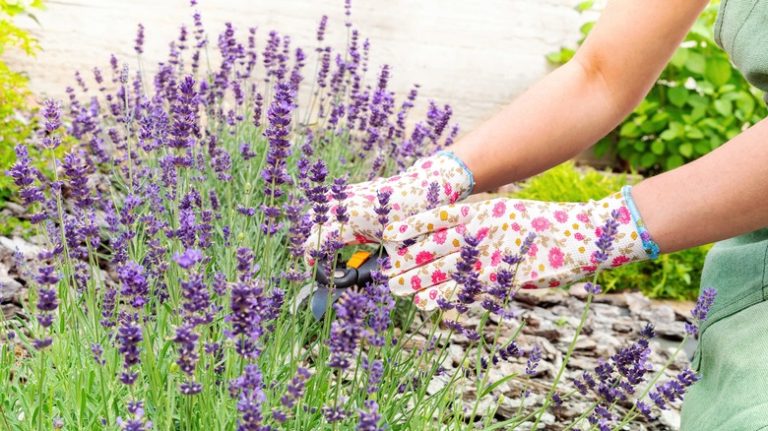If you’re looking for a plant that blooms with vibrant colors, is easy to grow, and requires minimal maintenance, marigolds may be the perfect choice for your garden. Marigolds are annual flowers that are known for their ability to add a pop of color to any outdoor space. They are also frost-tolerant, meaning they can survive early spring and late fall weather changes.
Marigold seeds are easy to sprout and can be started indoors about 6-8 weeks before the last frost date. Once the danger of frost has passed, you can transplant the seedlings outdoors. Marigolds prefer full sun exposure, but they can tolerate some shade. They also have a high tolerance for wind, making them a great choice for gardens in windy areas.
One of the best things about marigolds is that they practically take care of themselves. They have few insect and disease problems, and their strong scent helps to repel pests. However, if you want to give your marigolds an added boost, you can mulch around the base of the plants to conserve moisture and suppress weed growth.
Marigolds come in a variety of colors, including yellow, orange, red, and white. The blooms are typically daisy-like in shape and can range from small pom-pom flowers to larger, showier blossoms. Marigolds are also great for attracting pollinators such as bees and butterflies to your garden.
Whether you’re a beginner gardener or an experienced pro, marigolds are a great choice for adding color and beauty to your garden. With their no-fuss care requirements and stunning blooms, you’ll have a garden that’s in full bloom from spring until the first frost.
Growing Marigolds
Marigolds are an easy annual flower to grow, and they come in a wide variety of colors and sizes. They are a popular choice for many gardeners due to their low maintenance and ability to add vibrant color to any garden.
When planting marigolds, it is important to choose a location that receives full sun exposure. These flowers thrive in hot summers and can tolerate dry soil, making them perfect for areas with less than perfect conditions. Marigolds prefer well-drained soil, so make sure to provide them with a good level of water.
Marigolds can be grown from seeds or small seedlings that you can start indoors about 6-8 weeks before the last frost date. Sow the seeds in well-drained soil, about one-fourth inch deep, and keep the soil moist until the sprouts appear. Once the seedlings have reached a few inches tall, you can move them outdoors.
Water marigolds regularly, especially during dry spells. However, be careful not to overwater, as marigolds do not tolerate heavy clay soil or soggy conditions. It is generally recommended to water marigolds when the top inch of soil feels dry.
Marigolds are generally low-maintenance plants, but there are a few tips to keep in mind. Pinching off the buds of marigolds will encourage them to produce more flowers. Deadheading, or removing the faded and wilted flowers, will also help prolong the bloom time.
Marigold plants can attract pollinators to your garden, such as bees and butterflies, which makes them a great addition for any vegetable garden. They also have a strong scent that helps deter certain insects, such as aphids and mites, and can be used as a natural treatment for these pests.
Marigolds are also known to be resistant to many diseases and can tolerate hot and dry conditions. However, they can be affected by certain fungal diseases and nematodes, so it is important to practice good garden sanitation and avoid planting marigolds in the same location every year.
Overall, marigolds are a versatile and beautiful addition to any garden. They are easy to grow, attract pollinators, and add vibrant colors to your outdoor space. With proper care and maintenance, you can enjoy the beauty of marigolds throughout the growing season and even harvest their flowerheads for various uses.
Sources: American Meadows, Gardening Know How
How to Choose Marigolds
Marigolds are an easy-to-grow annual flower that is popular for their no-fuss nature and vibrant colors. If you’re looking to grow marigolds in your garden, here are some tips on how to choose the right ones:
1. Consider the Size: Marigolds come in a variety of heights and spreads. Some are short and compact, while others can grow quite tall. Think about the space you have available in your garden and choose a variety that fits well.
2. Know Your Zone: Marigolds are typically heat-tolerant, but different varieties have different temperature requirements. Check which hardiness zone you live in and choose marigolds that are suitable for your area.
3. Look for Disease Resistance: Some marigolds are more resistant to common diseases, such as powdery mildew or root rot, which can affect the health of the plants. Look for varieties that are known to be disease-resistant.
4. Consider Pest Resistance: Marigolds are known for their ability to repel pests like rabbits and insects. Some varieties may be more effective at defending against specific pests, so choose accordingly if you have a particular pest problem in your garden.
5. Choose the Right Colors: Marigolds come in a wide range of colors, including yellow, orange, red, and even bi-color varieties. Consider the overall color scheme of your garden and choose marigolds that will complement the other flowers and foliage planted there.
6. Consider the Flower Type: Marigolds can be divided into two main types: the American marigold, which has larger, rounder flowers, and the French or signet marigold, which has smaller, more delicate flowers. Choose the type that appeals to you the most.
7. Look for Organic Seeds: If you prefer to use organic materials in your garden, look for marigold seeds that are certified organic. This ensures that no synthetic pesticides or fertilizers were used during their cultivation.
8. Consider the Soil: Marigolds can grow well in average soil conditions, but they prefer well-drained soil with good fertility. If your soil is heavy clay or lacks organic material, consider amending it with compost or granular fertilizer before planting.
9. Provide Adequate Water: Marigolds need regular and thorough watering, especially during the hot summer months. Water the plants deeply, making sure the soil is thoroughly moistened but not waterlogged. Avoid overhead watering, which can encourage diseases.
10. Know When to Plant: Marigolds are sensitive to frost, so plant them in the spring after all danger of frost has passed. If you’re starting from seeds, sow them indoors several weeks before the last expected frost date and then transplant them outside after the danger of frost has passed.
By following these tips, you’ll be able to choose the right marigolds for your garden and enjoy their beautiful and vibrant flowers all summer long.
Where to Plant Marigolds
Marigolds are versatile annual flowers that can be planted in a variety of locations in your garden. They are relatively low-maintenance plants and can thrive in different conditions. Here are some tips on where to plant marigolds:
- Light: Marigolds love sunlight, so make sure to plant them in an area that receives at least 6 hours of direct sunlight every day. The more sunlight they get, the better they will bloom.
- Soil: Marigolds prefer well-drained soil. They can tolerate poor soil conditions, but they will perform better in soil that is rich in organic matter. Avoid planting marigolds in heavy clay soil as it retains too much water and can cause the roots to rot.
- Water: Marigolds are drought-tolerant plants, but they still need regular watering, especially during hot summers. Water the plants deeply, making sure the soil is moist but not waterlogged. Be careful not to overwater, as too much moisture can lead to root rot.
- Frost: Although marigolds are generally frost-tolerant, they prefer warm temperatures. Plant them after the last frost date in your area to ensure they have a long growing season.
- Pests: Marigolds are known to repel pests, including rabbits and certain insects. However, they are sometimes susceptible to aphids and spider mites. Keep an eye out for any signs of pest infestation and take appropriate measures to control them.
- Companion planting: Marigolds can be planted alongside other vegetables and herbs to provide natural pest control. They release a scent that deters certain insects, making them a popular choice for companion planting.
- Harvesting: Marigolds can be harvested at different stages of growth. You can collect the flowers when they are fully open for immediate use, or you can cut them when the buds are just beginning to show color. If you want to harvest marigold seeds, allow the flowers to dry on the plant, and then collect the dried flower heads and separate the seeds.
By following these planting tips, you can enjoy the vibrant colors and beautiful blooms of marigolds in your garden throughout the summer and into fall. Whether you choose the American, French, or signet variety, marigolds are a great addition to any garden.
What Kind of Soil to Use for Marigolds
Marigolds are a popular variety of annual flowers that are known for their vibrant colors and no-fuss nature. When it comes to planting marigolds, the type of soil you use can have a big impact on their growth and overall health.
Marigolds require a well-drained and fertile soil to thrive. They prefer a soil that is rich in organic matter and has a pH level between 6.0 and 7.5. The soil should also have good drainage to prevent waterlogged conditions, as marigolds do not tolerate wet feet.
When preparing the soil for marigolds, it is important to loosen it up and remove any weeds or debris. You can add compost or well-rotted manure to improve the soil’s fertility and drainage. This will provide the marigolds with the essential nutrients they need to grow and produce abundant blooms.
In terms of planting marigolds, they can be grown from both seeds and transplants. If you are starting from seeds, it is recommended to sow them directly in the garden after the danger of frost has passed. Marigolds can also be started indoors from seeds and then transplanted outdoors once they have developed a few true leaves.
When transplanting marigolds, make sure to handle the seedlings gently to avoid damaging their delicate roots. Dig a hole that is slightly larger than the root ball and place the seedling in the hole. Backfill the hole with soil, firming it gently around the base of the plant.
After planting, water the marigolds thoroughly to ensure that the roots are well established. Keep the soil evenly moist, but be careful not to overwater as this can lead to root rot. Once the marigolds are established, they are generally drought tolerant and do not require excessive watering.
In addition to proper soil preparation and watering, marigolds can benefit from regular feeding. You can use a balanced, water-soluble fertilizer to provide essential nutrients for their growth. Follow the instructions on the fertilizer package for the correct application rate.
Overall, marigolds are easy-to-grow plants that can thrive in a variety of soil conditions. However, by providing them with a well-drained and fertile soil, you can ensure that they will produce healthy foliage and abundant flowers throughout the growing season.

